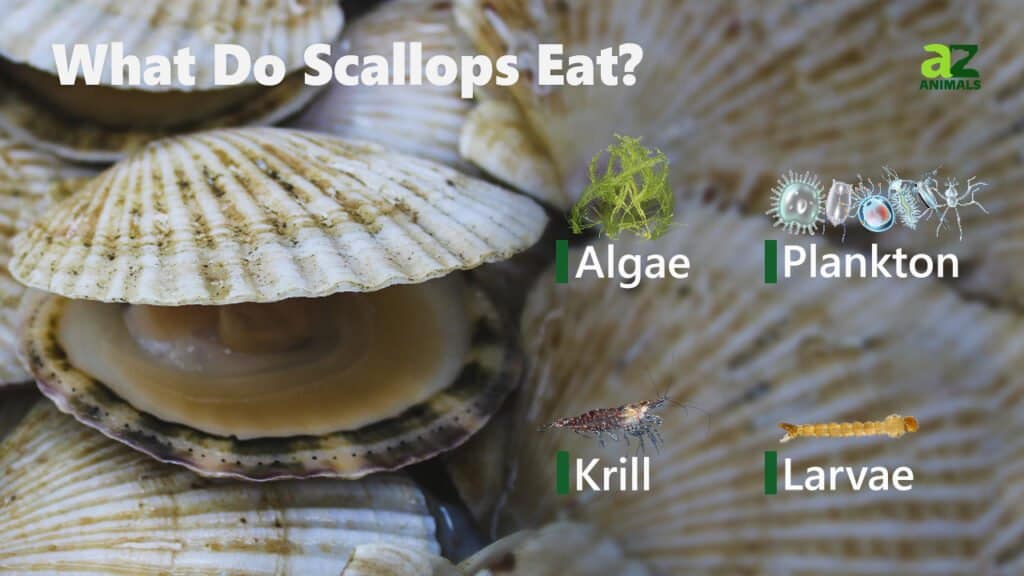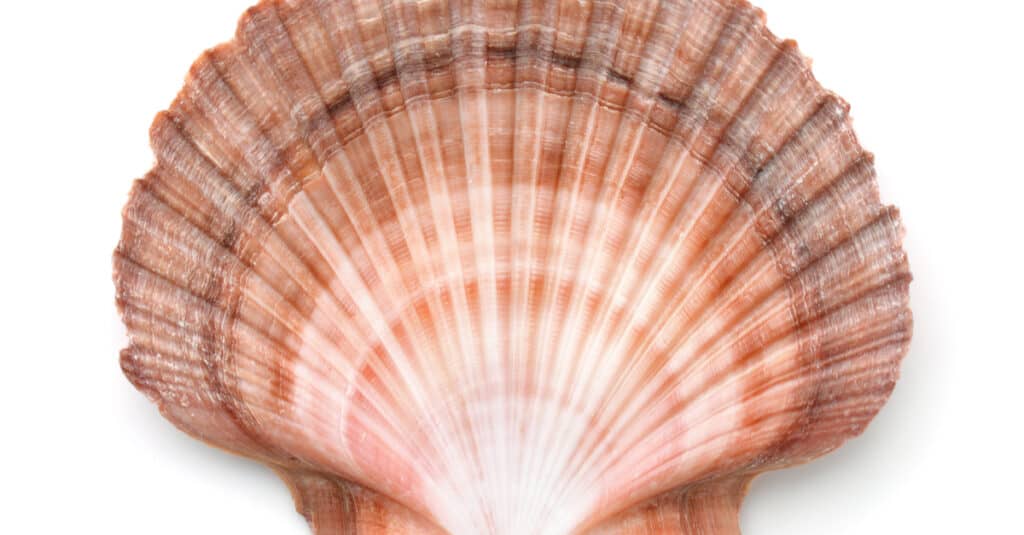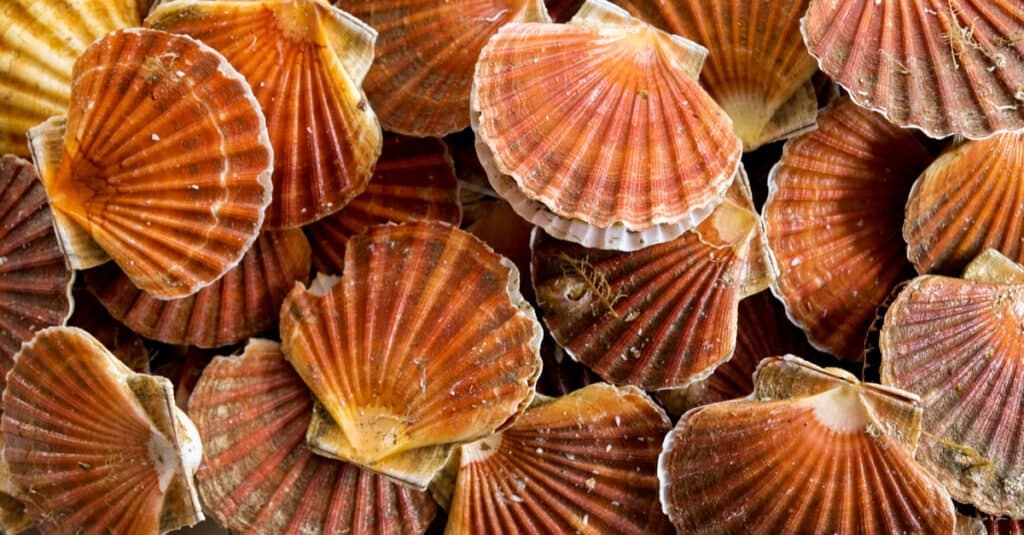Scallops are fascinating small marine animals. Scallops are a kind of marine bivalve mollusk. Oysters and clams are also in the same class, and they are all members of the Pectinidae family. However, the scallop, unlike the mussel and oyster, cannot completely shut and seal its shell and hence can only survive in deeper, higher salinity seawater. The scallop is also the only bivalve mollusk with the ability to “jump” and “swim.”
There are about 400 different species of scallops found across the world. Throughout world history, the scallop has held many spiritual meanings in various religions. Some saw it as a sign of the womb and fertility. Others interpreted its merging lines as a representation of the rising sun. These ideas were also borrowed by Christianity as a revival of life, a resurrection.
Scallops are also a common seafood option and are considered a delicacy by many people. This begs the question, what do scallops eat? We’ll learn everything there is to know about scallops and what they eat on a regular basis.
What Do Scallops Eat?

Scallops are herbivores that eat a diet that consists of plankton and other small organisms. They are often classified as filter feeders. This is because most of their diet is based on eating plankton.
Plankton are organisms that cannot swim properly and are transported by the tides. Scientists often divide plankton into two types. These are known as phytoplankton and zooplankton, respectively.
Plants that are tiny in size are known as phytoplankton. Phytoplankton use photosynthesis to convert the sun’s rays into energy, allowing them to stay near the water’s surface. Green algae, diatoms, and dinoflagellates are examples of phytoplankton.
Zooplankton is a microscopic animal. Examples of them are:
Scallops employ built-in siphons to suck water over mucus membranes, allowing plankton to get caught. Scillia will move the captured plankton into the scallop’s mouth once they have been trapped.
Since they are so beautiful and clean out the water, scallops are also a popular choice in home aquariums. They, however, need special attention. They require moderate to high water flow to provide food to them and remove wastes from the tank’s water.
What Are The Scallops Predators?
As such a small underwater dweller, scallops have a variety of different predators.
The underwater animals that they must watch out for the most include:
Sea stars are the primary predators of scallops. Sea stars suction onto a scallop, then pry its mouth open to consume the adductor muscle within. Humans are also a significant predator of scallops, as they engage in scallop fishing. Scallop dredges are enormous nets that are used to sweep up a large number of scallops at once. People can also scuba dive to discover and collect scallops.
Scallops avoid predators by swimming and the way in which they swim is pretty fascinating. Scallops, as previously stated, have a huge and developed adductor muscle. This is the meaty section of the scallop that most people eat. Scallops expand and shut their shells with their massive adductor muscle, pushing water and allowing them to jet forward.
Scallops can also have more than 100 eyes, depending on the species. But they aren’t eyes like we understand them to be. They have evolved to see in low-light environments, such as the ocean floor. With their numerous eyes, scallops can keep an eye out for predators as well as the concentration of particles in the water, allowing them to determine whether or not to feed.
How Do Scallops Impact The Ecosystem?

©Anton Starikov/Shutterstock.com
Filter-feeding animals are efficient biofilters that can help to reduce illness risk to both people and wildlife. Because of this, scallops are extremely beneficial to their ecosystem because they improve water quality and help to restore coastal habitats. As filter feeders, scallops enhance water quality by filtering plankton from the water while they eat it. This keeps the oceans from being overrun by excessive nutrients that will actually become harmful to the entire ocean’s ecosystem.
Another fascinating fact about scallops and the ocean’s ecosystem is their relationship with sponges. Some scallops, such as Chlamys hastata, commonly contain epibionts on their shells. An epibiont is an organism that lives on the surface of another living organism They typically have sponges and barnacles living on top of them.
The sponge-scallops relationship is classified as mutualism because the sponge protects the scallop by stopping sea stars from being able to adhere to the scallop. They are also able to camouflage the scallop from sea stars and even form a physical barrier to prevent sea stars from inserting their digestive membranes onto the scallop.
Are Scallops Dangerous to People?

Eating scallops has several nutritional advantages.
©Gill Copeland/Shutterstock.com
Scallops, like any overabundance of seafood eating, offers both advantages and disadvantages. Generally speaking, scallops are not harmful to humans. In fact, eating scallops has several nutritional advantages. Scallops are high in minerals that are beneficial to human health, such as zinc, copper, and selenium.
Zinc is essential for brain function, whereas copper protects against diabetes. Selenium is also essential for maintaining a healthy immune system.
Many people’s main worries about eating scallops include shellfish allergies and heavy metals like lead, mercury, and cadmium in scallops. Scallops, as well as many other shellfish, such as oysters and clams, are among the most common seafood allergies.
Eating scallops on a daily basis may cause a buildup of heavy metals in your body. Mercury toxicity is well-known for causing memory problems and impaired brain function. Because our systems cannot eliminate heavy metals, it is important to consume scallops in moderation.
The photo featured at the top of this post is © Gill Copeland/Shutterstock.com
Thank you for reading! Have some feedback for us? Contact the AZ Animals editorial team.






